Introduction: Why it is Important to Regulate the Tension of a Sewing Machine
You envisage yourself, working on your project and you are filled with much happiness that you will soon finish, when bang, you stitches are crooked, or the fabric gets puckered, or the loops appear on the backside of your fabric. Frustrating, right? In many cases, it is wrong sewing machine tension.
The only things that require the mastery of sewing machine tension are:
Even stitches
Puckering or looping prevention
Professional quality outcomes
A lot of new people consider tension to be a confusing part and they never touch it, however with this knowledge on how it functions, you will master your sewing and will have control and confidence in your works.
Here, you will find out in this comprehensive 2025 guide:
A Discussion of the meaning of sewing machine tension and its usage
Red flags to indicate that your strain is wrong
Guidelines on how to alter tension step by step
Diagnosing the problem of tension on various fabrics
FAQs to beginners
By the end, you will perfectly know how to adjust your machine to clean, professional stitching on any given project.
So What is Sewing Machine Tension?
Tension of a sewing machine regulates the tension of the top and bobbin threads as they cross and become stitches. It counterbalances the tension of the top thread and that of the bobbin in order to form a smooth stitch on the fabric layers.
Tension is of two kinds:
Bobbin Tension:
A screw on the bobbin case allows setting it. Balanced Tension:
the top and bottom threads interlock exactly between the layers of the fabric and give the smooth and even stitches.
Indications that Your Tension is Wrong Loops at the bottom side of the fabric (top tension lock not tight enough).
Eliminated looping of the fabric (bobbin tension or top tension set too tight). Fabric puckering ([top tension too large, or, wrong stitch length)) Unbalanced embroideries (Improper pulling of the thread, poor tension).
Constant breakage of the thread (threading or tension that is too tight).
When you experience these signals, you should put aside your tension before going ahead with your project.
Getting to grips with Tension Numbers on Your Machine The tension on most sewing machines is set with a dial that runs 0-9 (or 0-5).
The less the numbers the lesser the tension (less tight top thread) Greater numbers = Greater tension (Tauter top thread)
Typically: The medium-weight fabric can have a tension of 3 5 utilizing all-purpose thread. The right tension though, can change according to:
Type and thickness of fabric Type of thread, and its thickness Type and size of needle Used
Prior to Adjusting Tension: Before You Do This First Check… a lot of tension issues are as a result of other issues not the tension dial itself
Threading: Make sure that the machine is threaded properly, and the presser foot should be in the UP position when threading it to operate tension discs.
Bobbin Winding: Ensure the consistency of bay winding of a bobbin and it is fitted properly.
Needle: Make sure that you are using the right needle and it is not crooked and blunt. Presser Foot: make sure it is depressed during sewing.
Lint/Build-Up Threads: Lint and other debris can pile-up in your tension discs and bobbin case region, clean these thoroughly.
Quality of thread: Cheap thread and old thread can create tension problems; hence use good quality thread. Assuming they are right and after window tension is not all right, go ahead and correct the tension.
Step-By-Step, How to Adjust Top Thread Tension
Step 1: Make Machine Straight Stitch Your testing should use medium stitch length (2.5 3.0). Step 2: contrasting Thread color understand which thread is the problem.
Step 3: Sew Test Stitch on Scrap Fabric To test, use the same material as you are going to do your project.
Step 4: View the Stitches When you find loops on the back you have had the top tension too loose. When the top has loops, the top tension is a tight one. In the event that your threads are even without loops or puckering then your tension is fine.
Step 5: Move the tension Dial
Step 6: Test Again and Tweak Keep changing your knot and experimenting until you are obtaining even stitches.
Bobbins: How to Change the Tension When Needed Note:
You should not change bobbin tension unless you have no alternative as most problems in this case can be alleviated with the help of the tension dial found at the top.
To Check Bobbin Tension:
Hold the bobbin case along with bobbin in your hand.
2️� fiercely, the bobbin case must be held by the thread, and shaken gently. The bobbin case ought just to drop a little bit though not to suffer the thread to go running.
To Set Bobbin Tension:
Find the little screw on the bobbin case. Turn it clockwise making the tension tight. With it turned counterclockwise, it loosens the tension.
Turn in small positions (Turn 1/8 turn each time). Remove, adjust and re-insert the bobbin case and test stitches.
Tension Settings on Various Fabrics (2025 Negligence) Lightweight fabrics (silk, chiffon):
a fine needle and a light thread, with low top tension (23).
Medium (cotton, linen): Standard tension (3 5) all purpose effort. Heavy fabrics (denim, canvas): More tension (4-6), a thicker needle and thin will work.
Stretch fabrics (jersey, knits):
A stretch or ball point needle is necessary, inflate the stretch if puckering occurs. How to Trouble Shoot/Common Tension Problems Underside Hoops: Raise head tension. With the presser foot up re-thread machine. Verify the insertion of bobbin. Top Loops: Reduce the top-tension. Ensure the bobbin is placed proper and wound properly.
Cloth Puckering: Low top tension. Apply the right size of needles. Reduce adjust the stitch length.
Thread Breaking:
Reduced tonnage around the top. Test to see if the needles and the threads are compatible. Make sure that the threading is right.
Missing Stitches: Check threading. Switch into a new needle. Turn the tension dial around a little bit to check whether it solves the problem. Tension Maintenance How To Do It Aim at good thread and needles.
Clean your machine timely by removing lint and dust. Keep your machine covered so that there is no case of debris accumulation.
Do not use a used thread or one that has been baked in the sun, which will lead to breakage and tension instabilities. There is always the potential to cause problems by changing projects; check the tension by stitching on scrap before starting a new project.
Expert Trick: Tension Testing Technique of Precision To test the consistency, at an advanced stage, make a Tension
Test Strip: Cut a twelve-inch strip of your work fabric. Sew several lines with varying settings of the tension (mark them with a fabric marker).
Test what is the most stitch-clean set of tensions. Write down these settings in your sewing book so that it can be referred to next time when using the same fabric and thread.
Questions And Answers Regarding The Tension Of A Sewing Machine
Q: Should I change tension often?
A: It would only need doing when you have changed the type of fabric, the type of thread, or it is apparent to you that there are problems with the stitches.
Q: Do I have to play with the bobbin tension?
A: Seldom required, first tighten or slacken the top tension. Bobbin tension can only be adjusted on specialty rot and difficult tension problems.
Q: How could the tension shift when it is not adjusted?
A: Tension may be influenced by lint; worn needles, or careless threading. Frequent maintenance works.
Q: What is the reason that there are loops in the beginnings of sewing only?
A: Do not forget to hold thread tails with the early stitches, have right tension settings.
Conclusion:
Control Your Sewing Projects The knowledge of working with tensions on sewing machines turns your sewing frustrating to fun.
and in even strain:
You will have a professional and clean look in your stitches. There will be no puckering of your fabric. Your equipment will become more efficient.
Do not be afraid of that tension dial; it is your friend and will help you get perfect even stitches on all your projects be it a bridal gown, quilting or the daily garments.
Next Steps Practice makes confidence. Train on applying tension to other fabrics and even threads. Record in your sewing journal your preferred settings of tensions of different materials. Spread your professional and clean work on your sewing social media.
Bonus – Free Troubleshooting Chart – Sewing Machine Tension Create your free copy of our printable Tension Troubleshooting Chart to have handy your sewing machine by your side in order to troubleshoot tension problems that may arise as you proceed with your project.
Learn More Guides at SewingMachinee.com: 2025 Guide on:
* [Best Needles to use in Sewing Machines & How to Adjust] [Sewing Machine Maintenance Checklist Beginners] [Best Sewing Machine 2025: Beginner]
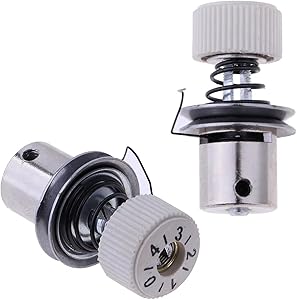
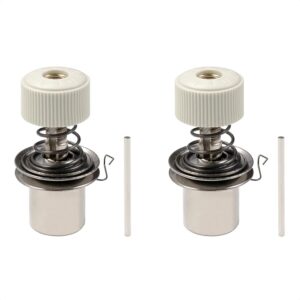
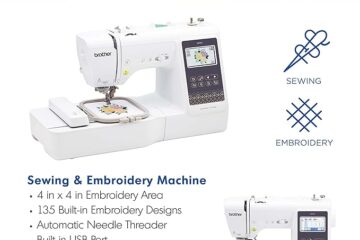
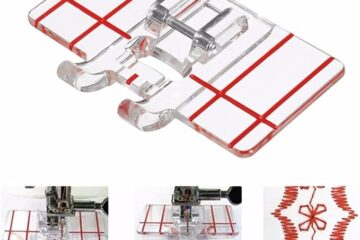
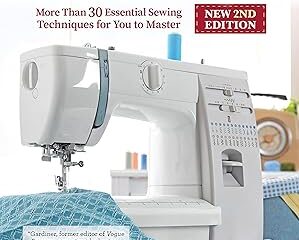
0 Comments